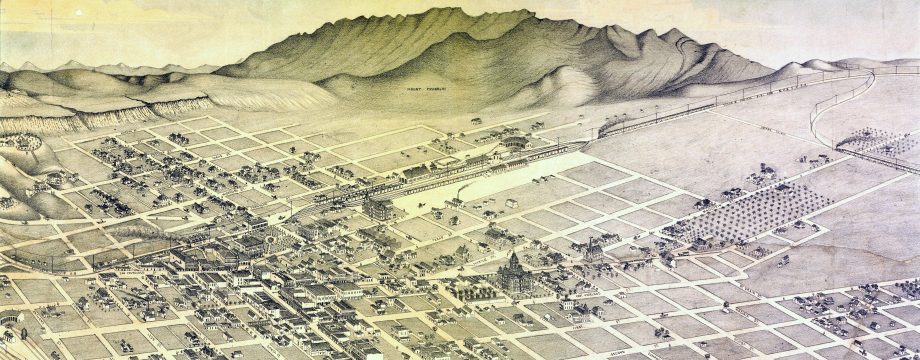
Last week I attended an advance screening of Fox’s upcoming animated series Bordertown, co-sponsored by USC El Centro Chicano, the Institute for Diversity & Empowerment at Annenberg, and the USC Annenberg Third Space Initiative. The event featured the showing of two episodes followed by a Q&A with the show’s creator Mark Hentemann, co-writer & cartoonist Lalo Alcaraz, actor Nicholas Gonzalez, and USC Annenberg Professor Josh Kun. Produced by Seth McFarlane, creator of Family Guy, Bordertown is set in the fictitious Mexifornia, a desert town that supposedly blends the characteristics of Arizona, Texas, and California. Bordertown takes a satirical look at cross-cultural interaction and conflict along the U.S.-Mexico border and pulls no punches in pointing out the absurdity of U.S. immigration policy and politics.

(From left to right: Bill Vela, Prof. Josh Kun, Mark Hentemann, Lalo Alcaraz, Nicholas Gonzalez, Maria Jose Plasencia, and Prof. Robert Hernandez)
The first episode, “the engagement,” appears to be the pilot and it will introduce audiences to the families of Bud Buckwald and Ernesto Gonzalez, neighbors in Mexifornia, as the town deals with the passage of an AZ SB 1070-like piece of anti-immigrant legislation. The second episode, entitled “Borderwall” will air around the middle of the first season and as the title implies spoofs the aftermath of constructing an outlandish concrete wall along the U.S.-Mexico border. According to Mark Hentemann, not all episodes will feature political issues and themes, but the show does seek to highlight the social friction emanating from cultural shifts in the country, like the emergence of a minority-majority populace.
Bud Buckwald is Archie Bunker-like in his take on the demographic, cultural, and economic transitions occurring in Bordertown. His family’s roots go back to the town’s establishment and he longs for the good old days when the town reflected his WASP heritage. Bud is disgruntled at work and home. He works for the Border Patrol, has a Mexican American supervisor, and is repeatedly outsmarted by a coyote that looks like the Mexican bandits featured in Warner Bros. 1948 film The Treasure of Sierra Madre. Even more aggravating for Buckwald, is that his immigrant neighbor is doing better than he is economically.
Ernesto Gonzalez is an immigrant from Mexico and the successful owner of a landscaping business. While Buckwald is bitter and nostalgic, Gonzalez is optimistic and sees America as truly, “the land of opportunity.” While Buckwald is rude and condescending in his interactions with his neighbor, Gonzalez is good natured and amicable, either ignoring, or apparently not picking up on Buckwald’s bigotry. Although posing contrasting figures, from the screening of the two episodes, it seems the two form somewhat of a friendship (or mutual tolerance) as the season progresses.
Clearly, the show plays with numerous cultural stereotypes, which according to Alcaraz are intended to shock, offend, and provoke a national dialogue surrounding the absurdity and incipient racism that underlies much of the popular discourse surrounding immigration, border security, the economy, demographic change, and multiculturalism. While not offended, I was certainly surprised by the show’s breakneck pace—rapidly moving from one social/political issue to another—as well as its reliance on cultural caricatures, misogynist representations of hyper-sexualized women, and its light-hearted depiction of border violence and death. In fairness, this is satire, and the show’s creators, writers, and producers certainly understand the seriousness of the topics they cover and feel comedy is the ideal medium to bring audiences together to laugh, think, and discuss these polarizing issues.
Debuting amidst an election year that has already witnessed a flood of anti-immigrant rhetoric ranging from the mildly xenophobic and ethnocentric to the blatantly racist, it seems Bordertown is ideally positioned to attract a lot of attention. Naturally, the true test will come in the weeks following its nationally televised release on Sunday, January 3rd 2016.
The show’s official trailer can be viewed here
Thanks to Adam Goodman for providing the photo of the panelists.



